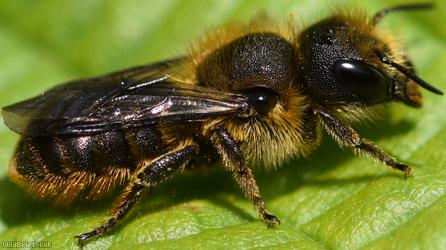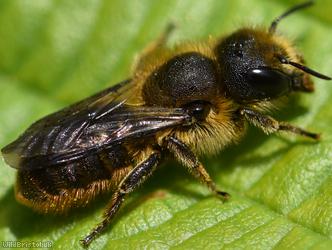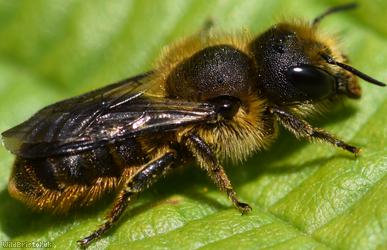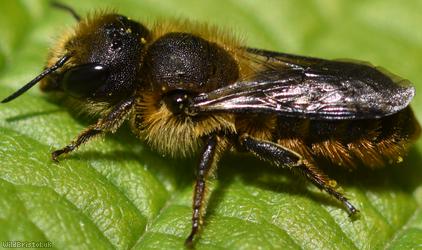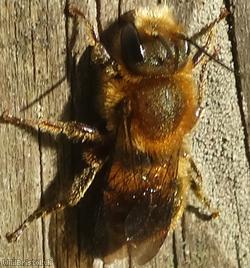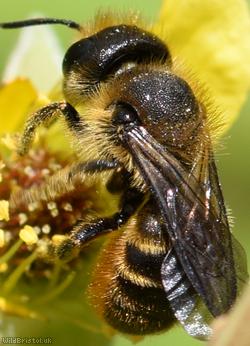Orange-vented Mason Bee - Osmia leaiana
Favourite Photos
Species Description
Widespread and frequent throughout the southern half of the UK, extending north to Yorkshire and Cumbria; becoming extremely sparse further north into Scotland. Habitat includes: places with lots of Thistles and Knapweeds such as gardens (bee hotels), parks, allotments, churchyards, woodland clearings / edges, wasteland, meadows, grassland, cliffs, fields (fence posts) etc. Flight period: May to August. Life story: Females collect pollen exclusively from members of the Asteraceae family in particular Spear Thistle and Black Knapweed, yellow-flowered species such as Oxeye Daisy etc. Nesting occurs in holes / cavities of fence posts, walls, cliffs, dead wood, sand faces etc. Nest cells are made from chewed-up leaves. Parasites: Main host of the rare Cuckoo-bee - Stelis phaeoptera and Chrysura radians.
